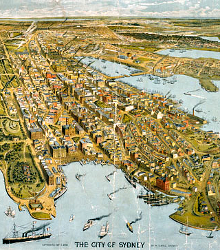City growth seen on natural lines
 Experts say Sydney has grown like a tumour.
Experts say Sydney has grown like a tumour.
In a comparison that likens urban expansion to the growth of biological systems, researchers have unveiled striking similarities between the development of Sydney and London.
The study highlights how these cities, much like living organisms, evolve and spread along transportation networks, mirroring the growth patterns of cancers.
According to the research, both Sydney and London experienced an initial phase of concentrated growth around their city centres.
This period was characterised by limited expansion until the advent of railway transport networks. The introduction of railways marked a pivotal shift from central to suburban living, encouraging populations to disperse along these new vascular transit lines.
The study's authors draw an intriguing parallel to biological growth, noting; “Sydney has grown like a tumour, spreading along transport lines”.
They elaborate on the similarity to cancer development, explaining how a tumour initially grows locally before new blood vessels allow it to spread and form solid malignant tumours.
This comparison underlines the critical role of transportation networks in urban development, likening the railway system to the lifeblood of city expansion.
This model of city behaviour offers valuable insights into urban planning and development.
By understanding the dynamics of growth and the interplay between transportation networks and population distribution, city planners can better predict and optimise future urban expansion.
The research emphasises the necessity of a comprehensive understanding of urban growth dynamics to foster sustainable city planning.
The parallels drawn between the development of cities and biological systems underscore a profound connection between human-made environments and natural growth patterns.
The full study is accessible here.








 Print
Print